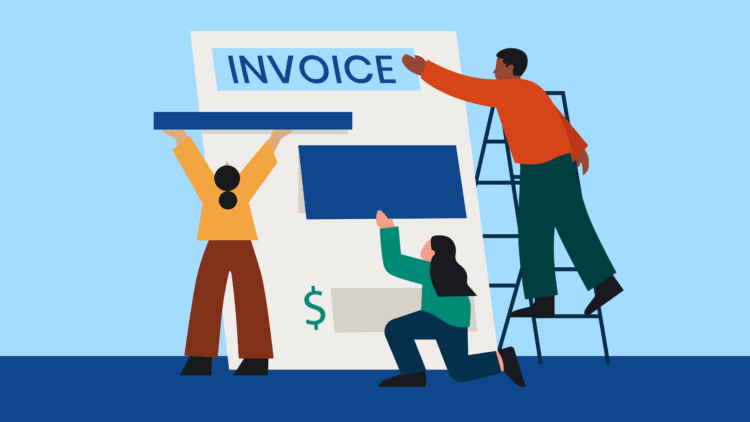There’s nothing worse than seeing unpaid client bills piling up. Attorneys deserve to be paid on time for the valuable work they do—and when you’re running a busy practice, you don’t want to waste time chasing down clients for payment. Therefore, law firms must develop effective accounts receivable processes.
But what makes an effective law firm accounts receivable process?
There are two elements. First, you must make it as easy and attractive as possible for clients to pay. Second, you need to minimize the time you spend following up on late payments. This article explains how law firms can improve their accounts receivables process—specifically, how Clio Payments boosts efficiency and reduces manual effort to a minimum.

What is a law firm accounts receivable process?
The term “accounts receivables” refers to money your law firm has earned and invoiced for but not yet received. In other words, unpaid client bills. Accounts receivables are listed as assets on law firms’ balance sheets.
Generally speaking, once firms send out an invoice, they’ll usually wait until their payment due date expires before contacting a client. Payment due dates vary from firm to firm—while some have 30-day payment due dates, others might be more lenient and extend this to 60 days.
Once this date has passed and the firm still hasn’t received what clients owe, they will then reach out to gently enquire/remind the client about their invoice. Attorneys might call them up from their personal mobile, ask a paralegal to send off an email, or their firm might implement an automated system that automatically tracks overdue payments and sends out reminders (such as Clio Payments).
Improving the accounts receivable process for your law firm
The traditional law firm accounts receivable process leaves a lot to be desired. Firms unknowingly lower their chances of being paid on time by including only a fraction of potential payment options. Additionally, relying on manual interventions from their staff to remind clients of owing balances can quickly become an administrative time suck. Rest assured, there’s a better way.
Below, we explore these areas in detail and outline how to improve the accounts receivable process at your law firm with Clio Manage.
Send invoices electronically
Law firms might differ in their practice area, size, and location, but one thing remains the same: The accounts receivables process always starts with a bill. Clients will only pay if you send them an invoice.
Therefore, you must ensure your clients receive these invoices as quickly and easily as possible to increase the likelihood of them paying promptly. But there’s an issue. Traditional methods—such as sending paper bills through the mail—are unreliable in today’s hyper-connected, digital world. Paper bills can get lost in the mail, and receiving an invoice months after the work has been completed is frustrating for clients.
Fortunately, Clio Manage offers the ideal solution.
Streamline your law firm invoice process by creating easy-to-use law firm invoice templates, setting up billing rates ahead of time, automatically tracking the time you spend on each case, and approving bills within Clio Manage. Then, send these bills electronically using Clio’s secure client portal, ensuring they reach the intended recipient near-instantly.

Provide alternative payment options
Whether buying groceries or big-ticket items, consumers have become accustomed to selecting from various payment options. Paying with your phone? No problem. Want to set up an installment plan? Of course—here’s how.
This expectation now extends to legal services, too. Clio’s 2022 Legal Trends Report found that offering multiple payment options is the fourth-highest-ranking factor for law firm hireability. An estimated 70% of clients want the option to pay via a payment plan, 65% want the option of legal insurance, and 53% want the opportunity to crowdfund their legal bills.
Breaking payments into smaller, more manageable installments benefits both firms and their clients. It’s easier for clients to pay their bills—meaning firms get paid for their hard work without needing to constantly chase up. Win-win.
Clio Payments lets Clio Manage users offer a range of payment options, from online credit card payments to eCheck payments to installment plans. It handles all trust-related transactions in compliance with IOLTA rules and uses the payment industry’s most advanced security measures.
If you’re looking to offer client-centric, secure payment options, then Clio Payments is just what you need.
Offer online payment methods
Clio research has found firms that offer online payments bring in more revenue than those that don’t. This is hardly surprising. Clients expect to handle everything online, from sourcing a law firm to setting up a meeting to electronically signing a letter of engagement. So, why wouldn’t they pay their bill online?
Offering online payments helps firms meet client expectations while also ensuring they get paid faster. Be client-centered by making it easy for clients to pay bills online as soon as they’re received. With Clio Payments, your firm can accept credit, debit, or eCheck payments securely with Pay Now buttons in your electronic bills along with QR codes and secure click-to-pay links embedded in emails.

Use easy, click-to-pay links and QR codes
Offering online payment methods isn’t the only way to make your clients’ lives as easy as possible. Go one step further by providing Click-to-pay links or QR codes, meaning clients can pay instantaneously through Clio Payments.
So, how exactly does this work?
First, you send a secure link to your firm’s payment portal. Access your firm’s click-to-pay link by selecting New charge from the Online payments tab before clicking the Copy payment link. Then, paste this link in outgoing communications, add it to your website, or save it to your bookmarks to use as needed.
Automate follow-up for outstanding bills
Attorneys are highly skilled professionals, so they shouldn’t waste their valuable time following up on outstanding bills. Unfortunately, too many firms struggle to optimize their accounts receivable processes, meaning valuable fee-earners spend too long chasing up overdue payments.
Fortunately, with Clio, you can put that in the rearview mirror. Clio Manage’s Automated Bill Reminder feature enables you to track outstanding bills and automatically send outstanding Balances to clients and bill recipients based on a schedule. Follow up on all outstanding bills from one place—it couldn’t be simpler.
Do away with manually monitoring payments and sending clients reminders. With the Automated Bill Reminder feature, your attorneys can spend more time on billable work instead of chasing up payment. Use automation to make sending bill reminders an effective, efficient process rather than a never-ending distraction.
Bonus: navigate chargebacks with ease
Unfortunately, the accounts receivables process isn’t always smooth sailing. It’s one thing for clients to pay late, but it’s another matter entirely when they dispute a transaction. This is known as a chargeback—the client disputes their debit/credit card transaction, and their money is returned to their bank account.
There are several potential reasons for a chargeback. Perhaps the client did so in error, having not recognized the transaction and mistakenly deemed it to be fraudulent. Or, maybe they’re simply showing their frustration (especially if their case hasn’t gone as they hoped it would) and are using chargebacks to either demonstrate their dissatisfaction or try to obtain these services for free.
Clio helps firms resolve chargebacks as simply as possible. Firms are instantly notified by email when a client challenges a charge. These emails include a “Respond to dispute” button that takes firms to a page where they can begin the dispute resolution, engaging in a process called representation—this is where the firm submits its evidence to the issuing bank. Clio’s Payment Operations department will also contact Clio Manage users to see if they need any assistance in disrupting the chargeback in question.
You may like these posts
Final thoughts on improving the accounts receivable process for law firms
There are several steps firms can take to reduce the time they spend chasing up late payments and make life as easy as possible for their clients. Sending invoices electronically, providing alternative payment options, offering online payment methods, and including click-to-pay links and QR codes will transform your firm’s accounts receivables process. What’s more, with tools like Clio Manage, you can resolve potential chargebacks from one single portal in no time.
But don’t just take our word for it.
Jodi Donato, Solo Attorney, implemented Clio Manage to help take control over her accounts receivables process. The result?
“My accounts receivable is the lowest it has ever been in my 27 years of practice, and I haven’t had to institute collections actions against any clients this year.”
What sort of impact would this have on your firm? Sign up for a 7-day free trial of Clio Manage today to find out for yourself.
We published this blog post in December 2022. Last updated: .
Categorized in: Accounting








